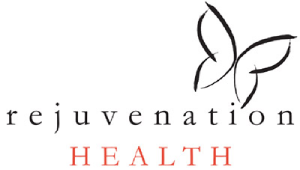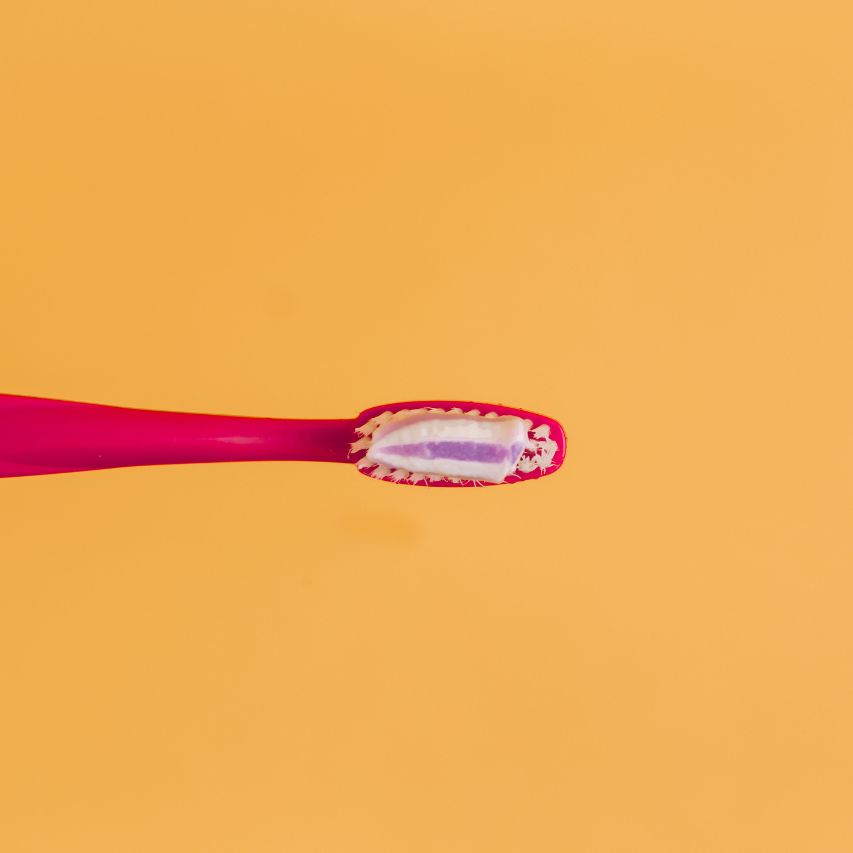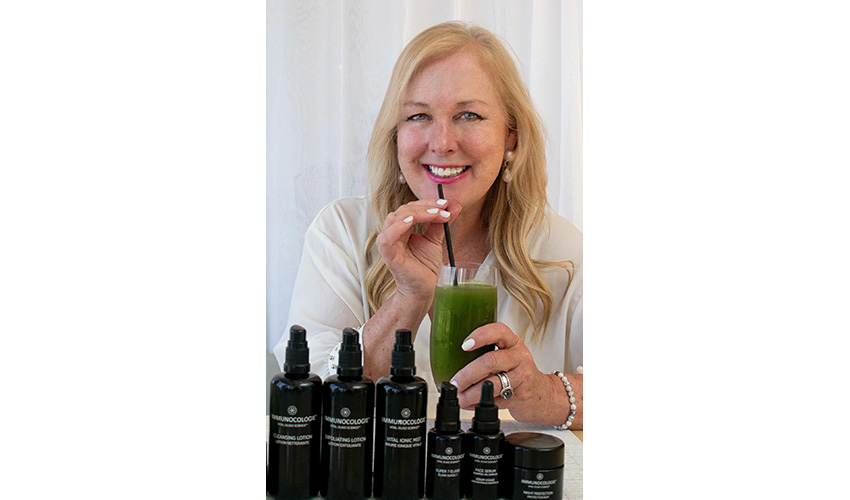Tooth decay leads to dental cavities, which are near impossible to cure. Tooth decay may be associated with whole-body health conditions, like heart disease and dementia.
Read more about the connection between your oral health and whole-body health with this in-depth book: The Mouth-Body Connection.
Instead of treating tooth decay with costly dentist visits, you can prevent tooth decay through inexpensive, all-natural means. Natural prevention methods include a proper oral hygiene routine, certain essential oils, specific dietary changes, and more. We’ll break it all down for you.
What is tooth decay?
Tooth decay is when the enamel and eventually the dentin layer of your tooth structure erodes, due to a combination of harmful bacteria and acid exposure.
Cavities (dental caries) are what happen when tooth decay is allowed to run wild — however, the terms “tooth decay” and “cavities” are usually used interchangeably.
Minor tooth decay is reversible. Pre-cavities occur when tooth damage has reached the enamel layer but not the dentin layer. Pre-cavities are not painful and should not present holes in your teeth. You can treat pre-cavities.
Cavities are not reversible, but they are manageable. When you can identify holes in a tooth, you likely have a cavity. Toothache may occur regularly. There is no miracle cure, but symptoms are manageable.
Home Remedies for Cavities
The simplest home remedy for cavities is prevention. But oral hygiene practices cannot reverse cavities. No home remedy can completely restore dental caries. But if you do get a cavity, there are some natural remedies to manage pain until you can get to a dentist.
Can you reverse tooth decay naturally? No, you cannot fully reverse tooth decay through natural treatments, although hydroxyapatite toothpaste or calcium supplementation may stop demineralization and help remineralize some lost tooth structure.
The natural home remedies below can help manage tooth pain, clean the cavity, slow or stop further tooth decay, and even reduce inflammation. Ultimately, if you have a dental cavity, you should set up an appointment with your dentist.
Oregano Oil
Oregano essential oil can help prevent infection from forming in a tooth cavity. It can also destroy harmful bacteria in your oral microbiome, helping prevent further tooth decay.
Cinnamon Oil
Cinnamon essential oil may reduce inflammation, treat toothache, and lower your risk of infection. With its natural antibacterial properties, cinnamon oil can kill the bad bacteria that cause tooth decay.
Salt Water Rinse
Decades of science and centuries of traditional wisdom have shown that a salt water mouth rinse can improve oral health, by reducing plaque buildup and killing harmful bacteria in your oral microbiome — both of which would contribute to tooth decay if left unchecked.
A salt water rinse can help with all sorts of health conditions, such as gingivitis. Rinsing with any water can get rid of food particles or acidic food and drink residue that may contribute to tooth decay and excess pain in existing cavities.
What are some natural remedies to fight cavities? Oregano oil, cinnamon oil, and a salt water rinse are 3 natural remedies to fight cavities and prevent tooth decay.
11 Ways To Prevent Tooth Decay
1. Brush your teeth.
Brushing your teeth helps get rid of the thin coating of dental plaque on your tooth surface.
How to brush properly:
- Use gentle circles angled towards your gums. None of that side-to-side motion, and don’t brush too hard — that can actually damage your teeth.
- Use soft bristles. Hard bristles can do more harm than good.
- Use an electric toothbrush. Electric toothbrushes are much better at those circular motions than the average person.
- Brush twice a day. On average, it takes plaque about half a day to form before it starts causing tooth decay. That’s fairly general, but it’s a good guide for how often to brush those pearly whites.
- Don’t brush after acidic meals. If you brush your teeth right after a meal, or right after drinking an acidic drink like soda or orange juice, you are actually rubbing the acids into your tooth enamel. Rinse your mouth clean of those acids after meals, and wait 30 minutes or so before brushing.
- Rinse after brushing. To really get all that excess dental plaque (and food particles) out from in between your teeth, you should rinse out your mouth after brushing or flossing. Don’t use alcohol-based mouthwash that dries out your mouth; water works just fine.
2. Use the right toothpaste.
Fluoride toothpaste is proven to remineralize teeth suffering from tooth decay. However, ingesting excess fluoride is associated with lower intelligence, skeletal fluorosis, low blood pressure, birth defects, and more.
More and more experts are recommending children under age 6 use fluoride-free toothpaste or no toothpaste (just water on the toothbrush) since young children’s swallowing reflex is not fully formed.
Natural toothpastes ]containing essential oils, prebiotics, and essential vitamins may improve your oral health, especially if the toothpaste has natural antibacterial and anti-inflammatory properties. Revitin is a fluoride-free prebiotic toothpaste that benefits your oral microbiome.
Hydroxyapatite (HAP) toothpaste is an alternative to fluoride toothpaste. HAP has similar benefits to fluoride, but none of the side effects. Brands like Boka or RiseWell sell quality HAP toothpastes as well.
3. Don’t forget mouthwash.
Rinsing out your mouth after brushing your teeth or after a meal is helpful for your oral health. Excess plaque, dietary acids, and food particles may only get flushed out by a mouth rinse.
Avoid alcohol-based mouthwash which dries out the mouth and promotes tooth decay, gum disease, and an imbalanced oral microbiome.
Opt for a water mouth rinse or an all-natural mouthwash using healthy essential oils.
Good mouthwash ingredients to look for include:
- Peppermint oil
- Clove oil
- Spearmint oil
- Tea tree oil
- Cinnamon essential oil
- Coconut oil
- Xylitol
- Aloe
Mouthwash ingredients to avoid include:
4. Try oil pulling.
Coconut oil pulling is great for your mouth since it has natural anti-inflammatory and antibacterial properties.
How to do oil pulling:
- Put a tablespoon of coconut oil in your mouth. The coconut oil will turn liquid quickly.
- Swish the coconut oil around in your mouth for 5-20 minutes. Swish between your teeth and in the far corners of your mouth. Avoid swallowing.
- Spit the coconut oil into a trash can, not the sink — it will turn solid at room temperature.
5. Chew sugar-free gum.
If there is no sugar to feed the harmful bacteria on your teeth, chewing gum can benefit your oral health. Chewing sugar-free gum promotes saliva production, preventing dry mouth, and helps get food particles out from in between your teeth — both of which help prevent tooth decay.
Look for gum sweetened with xylitol, which has been shown to improve oral health outcomes even compared to other sugar-free gums. (Xylitol is a natural sugar alcohol that is perfectly safe for humans, but it is very dangerous for dogs to consume — so keep it out of reach from your four-legged friends!)
6. Up your vitamin D intake.
Vitamin D helps teeth absorb and retain calcium, magnesium, and phosphorus. These nutrients are important for remineralization and can prevent tooth decay. Make sure you are getting enough vitamin D in your diet.
7. Try some real licorice.
No, not Twizzlers. Real licorice is black and made from the roots of the licorice plant.
According to this 2020 study, “The anti-inflammatory, anti-adhesive, anti-microbial properties of liquorice have shown beneficial effects in oral diseases like dental caries” and other oral diseases. (Reminder: “dental caries” is the scientific term for “cavities”.)
8. Watch out for sugar.
To prevent tooth decay, you need to watch out for sugar in all its forms. Sugar can be found in candy, sodas, corn syrup, sauces like ketchup, protein bars, energy drinks, fruit juices, and so much more.
Sugars feed the harmful bacteria on your teeth and in your oral microbiome. When bacteria consume the sugars, they secrete acids which cause tooth decay. If you starve these bacteria of sugar, tooth decay will slow down or possibly stop altogether.
9. Avoid these foods.
If you want to prevent tooth decay, avoid these harmful foods:
- Simple carbs, like cookies, white bread, cake, and cereals
- Sticky, sugary foods like dried fruit, pies, and chewable sweets
- Fried starches like potato chips and french fries
- Sugary drinks like soda, sports drinks, and fruit juice
- Acidic foods and drinks like coffee, citrus, and wine
- Popcorn that gets stuck in your teeth
- Alcohol, which dries out the mouth
10. Eat these foods.
What foods prevent tooth decay? Check out these foods that help prevent tooth decay:
-
- Dairy products, particularly those rich in calcium or vitamin D
- Fatty fish
- Leafy green vegetables
- Crunchy vegetables
- Nuts and seeds
- Whole grains
- Eggs
- Green tea
11. Drink water after eating.
Drinking water or rinsing your mouth out after consuming sticky foods, acidic drinks, or sugary meals can get rid of acidic food particles and harmful sugars lingering on your teeth. Water can help prevent tooth decay in many ways — whether you’re drinking it or swishing it!
What Your Dentist Can Do
Your dentist can perform some preventative treatments, including:
- Regular dental checkups
- Twice yearly cleanings
- Dental sealants
- Remineralization supplements (like fluoride treatments or prescription toothpaste)
At your biannual visits to your dentist, dental professionals can identify early signs of tooth decay and recommend treatments or lifestyle changes to prevent the decay from worsening.
Looking for a biological dentist who treats each patient as an individual with a minimally-invasive, science-based approach? Schedule an appointment with Rejuvenation Dentistry today!
Sources
- Kim, K., Choi, S., Chang, J., Kim, S. M., Kim, S. J., Kim, R. J. Y., … & Park, S. M. (2019). Severity of dental caries and risk of coronary heart disease in middle-aged men and women: A population-based cohort study of Korean adults, 2002–2013. Scientific reports, 9(1), 1-7. Full text: https://www.ncbi.nlm.nih.gov/pmc/articles/PMC6642137/
- Noble, J. M., Scarmeas, N., & Papapanou, P. N. (2013). Poor oral health as a chronic, potentially modifiable dementia risk factor: review of the literature. Current neurology and neuroscience reports, 13(10), 1-8. Full text: https://www.ncbi.nlm.nih.gov/pmc/articles/PMC6526728/
- O’Hagan-Wong, K., Enax, J., Meyer, F., & Ganss, B. (2021). The use of hydroxyapatite toothpaste to prevent dental caries. Odontology, 1-8. Full text: https://www.ncbi.nlm.nih.gov/pmc/articles/PMC8930857/
- Meyer, F., Amaechi, B. T., Fabritius, H. O., & Enax, J. (2018). Overview of calcium phosphates used in biomimetic oral care. The open dentistry journal, 12, 406. Full text: https://www.ncbi.nlm.nih.gov/pmc/articles/PMC5997847/
- Hosny, K., Asfour, H., Rizg, W., Alhakamy, N. A., Sindi, A., Alkhalidi, H., … & Khallaf, R. (2021). Formulation, Optimization, and Evaluation of Oregano Oil Nanoemulsions for the Treatment of Infections Due to Oral Microbiota. International Journal of Nanomedicine, 16, 5465. Full text: https://www.ncbi.nlm.nih.gov/pmc/articles/PMC8370598/
- Gupta, C., Garg, A. P., Prakash, D., Goyal, S., & Gupta, S. (2011). Comparative study of cinnamon oil & clove oil on some oral microbiota. Abstract: https://pubmed.ncbi.nlm.nih.gov/22783715/
- Aravinth, V., Narayanan, M. A., Kumar, S. R., Selvamary, A. L., & Sujatha, A. (2017). Comparative evaluation of salt water rinse with chlorhexidine against oral microbes: a school-based randomized controlled trial. Journal of Indian Society of Pedodontics and Preventive Dentistry, 35(4), 319. Abstract: https://pubmed.ncbi.nlm.nih.gov/28914244/
- Huynh, N. C. N., Everts, V., Leethanakul, C., Pavasant, P., & Ampornaramveth, R. S. (2016). Rinsing with saline promotes human gingival fibroblast wound healing in vitro. PloS one, 11(7), e0159843. Full text: https://www.ncbi.nlm.nih.gov/pmc/articles/PMC4956236/
- Guth, S., Hüser, S., Roth, A., Degen, G., Diel, P., Edlund, K., … & Hengstler, J. G. (2020). Toxicity of fluoride: critical evaluation of evidence for human developmental neurotoxicity in epidemiological studies, animal experiments and in vitro analyses. Archives of toxicology, 94(5), 1375-1415. Full text: https://www.ncbi.nlm.nih.gov/pmc/articles/PMC7261729/
- Ullah, R., Zafar, M. S., & Shahani, N. (2017). Potential fluoride toxicity from oral medicaments: A review. Iranian journal of basic medical sciences, 20(8), 841. Full text: https://www.ncbi.nlm.nih.gov/pmc/articles/PMC5651468/
- Talha, B., & Swarnkar, S. A. (2022). Xerostomia. In StatPearls [Internet]. StatPearls Publishing. Full text: https://www.ncbi.nlm.nih.gov/books/NBK545287/
- Radzki, D., Wilhelm-Węglarz, M., Pruska, K., Kusiak, A., & Ordyniec-Kwaśnica, I. (2022). A Fresh Look at Mouthwashes—What Is Inside and What Is It For?. International journal of environmental research and public health, 19(7), 3926. Full text: https://www.ncbi.nlm.nih.gov/pmc/articles/PMC8997378/
- Hager, E., Chen, J., & Zhao, L. (2022). Minireview: Parabens Exposure and Breast Cancer. International Journal of Environmental Research and Public Health, 19(3), 1873. Ful text: https://www.ncbi.nlm.nih.gov/pmc/articles/PMC8834979/
- Weatherly, L. M., & Gosse, J. A. (2017). Triclosan exposure, transformation, and human health effects. Journal of Toxicology and Environmental Health, Part B, 20(8), 447-469. Full text: https://www.ncbi.nlm.nih.gov/pmc/articles/PMC6126357/
- Peedikayil, F. C., Remy, V., John, S., Chandru, T. P., Sreenivasan, P., & Bijapur, G. A. (2016). Comparison of antibacterial efficacy of coconut oil and chlorhexidine on Streptococcus mutans: An in vivo study. Journal of International Society of Preventive & Community Dentistry, 6(5), 447. Full text: https://www.ncbi.nlm.nih.gov/pmc/articles/PMC5109859/
- Varma, S. R., Sivaprakasam, T. O., Arumugam, I., Dilip, N., Raghuraman, M., Pavan, K. B., … & Paramesh, R. (2019). In vitro anti-inflammatory and skin protective properties of Virgin coconut oil. Journal of traditional and complementary medicine, 9(1), 5-14. Full text: https://www.ncbi.nlm.nih.gov/pmc/articles/PMC6335493/
- Janakiram, C., Kumar, C. D., & Joseph, J. (2017). Xylitol in preventing dental caries: A systematic review and meta-analyses. Journal of natural science, biology, and medicine, 8(1), 16. Full text: https://www.ncbi.nlm.nih.gov/pmc/articles/PMC5320817/
- Söderling, E., & Pienihäkkinen, K. (2021). Effects of xylitol chewing gum and candies on the accumulation of dental plaque: a systematic review. Clinical Oral Investigations, 1-11. Full text: https://www.ncbi.nlm.nih.gov/pmc/articles/PMC8791908/
- Sidhu, P., Shankargouda, S., Rath, A., Ramamurthy, P. H., Fernandes, B., & Singh, A. K. (2020). Therapeutic benefits of liquorice in dentistry. Journal of Ayurveda and integrative medicine, 11(1), 82-88. Full text: https://www.ncbi.nlm.nih.gov/pmc/articles/PMC7125382/




